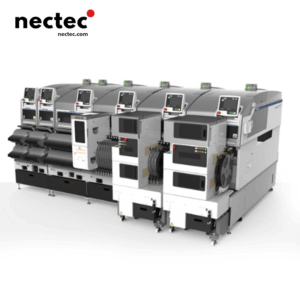在当今快节奏的生产环境中,效率和精度至关重要。在现有的各种工具中 手动取放机 have emerged as a reliable solution to streamline assembly processes. This blog post will explore the features, benefits, and operational tips for using 手动取放机 effectively.
了解手动取放机器
Manual pick and place machines are specialized devices used to manually receive, position, and secure components in a predetermined location on a circuit board or assembly line. These machines come with several features designed to enhance the accuracy of placement and overall productivity of assembly processes.
它们是如何工作的?
Operating a manual pick and place machine involves a straightforward process. The operator would use a vacuum nozzle or a mechanical arm to pick up components from a feeder. These components are then precisely placed on a printed circuit board (PCB) or any other surface. The simplicity of the operational mechanism allows for easy training of operators, making them a preferred choice for small manufacturing setups.
手动取放机器的主要特点
- 精确控制: These machines allow for minute adjustments, enabling operators to place components accurately every time.
- 灵活性: Manual pick and place machines can handle a wide variety of components, from small surface mount devices (SMDs) to larger connectors.
- 耐用性: Built from high-quality materials, these machines are designed to withstand repeated use in a busy production environment.
- Operator-Friendly: Most manual machines are designed with ergonomics in mind, ensuring operators can work comfortably without fatigue.
使用手动取放机器的好处
The integration of manual pick and place machines into assembly lines provides several advantages:
1.提高效率
Manual pick and place machines can significantly reduce the time taken for assembly. Operators can achieve higher outputs compared to traditional hand placement methods, allowing for more components to be processed in less time.
2.具有成本效益的解决方案
For smaller businesses or production lines with limited budgets, manual pick and place machines offer a cost-effective solution. They typically have lower initial and maintenance costs compared to their automated counterparts, making them accessible for a wide range of operations.
3. Quality Control and Precision
One of the significant advantages of using manual machines is the control they offer over the assembly process. Operators can carry out quality checks during placement, minimizing errors and ensuring that each component is correctly positioned.
4. Versatility and Adaptability
Manual pick and place machines can easily adapt to different types of components and board layouts, which is particularly beneficial for businesses that frequently change their product lines or work on low-volume, custom orders.
Operational Tips for Maximizing Efficiency with Manual Pick and Place Machines
培训与技能发展
An operator’s skill level is crucial for maximizing the functionality of a manual pick and place machine. Regular training sessions focusing on best practices, machine operation, and component handling can significantly improve efficiency.
定期维护
To ensure consistent performance, conduct regular maintenance checks. This includes cleaning the vacuum nozzle, inspecting gas lines for leaks, and replacing worn parts, all of which help maintain accuracy and prolong the machine’s lifespan.
Optimizing Component Loading
Efficient component loading can drastically reduce downtime. Organize components in a way that reduces the time taken for operators to pick and place them. Color-coding or labeling can also improve speed and reduce mistakes.
Implementing Workflow Efficiency
Design a layout that minimizes unnecessary movements. Keeping tools, components, and the machine within easy reach can facilitate smoother operations and enhance productivity on the assembly line.
Common Industries Utilizing Manual Pick and Place Machines
Manual pick and place machines are versatile and find applications across various industries, including:
1.电子产品制造
In the electronics sector, these machines are commonly used to assemble PCBs and other electronic components. Their precision helps in ensuring that even the tiniest SMDs are perfectly positioned.
2.医疗设备
For medical devices where quality control is crucial, manual pick and place machines provide a balance of precision and flexibility that automated options may not offer, especially in low-volume production settings.
3.汽车行业
The automotive industry leverages these machines for precise assembly of components, ensuring safety and reliability through rigorous assembly processes.
4. Custom Fabrication
Custom fabrication businesses that specialize in low-volume production often prefer manual pick and place machines due to their adaptability and ease of use, allowing for a wide range of components to be assembled efficiently.
手动取放机器的未来
As technology evolves, manual pick and place machines are expected to integrate more sophisticated features, such as enhanced user interfaces and connectivity for easier tracking of production metrics. Innovations in ergonomics and materials will likely continue to improve operator comfort and machine longevity.
最终想法
Manual pick and place machines stand out as a vital component in the arsenal of modern manufacturing tools. By understanding their benefits, features, and best operational practices, businesses can enhance their assembly processes, contributing to increased efficiency and precision in manufacturing.






